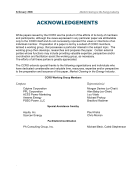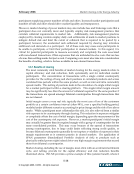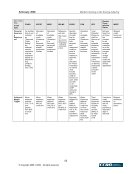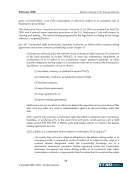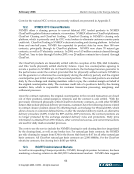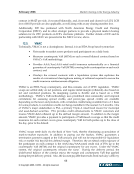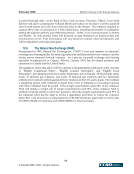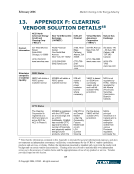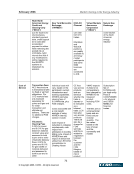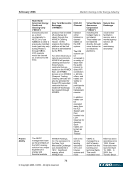February 2006 Market Clearing in the Energy Industry 55 © Copyright 2005, CCRO. All rights reserved. 11. APPENDIX D: BANKRUPTCY CONSIDERATION44 DETAILS An important component to the legal framework for any clearing solution is whether the netting or setoff provided by the solution will be available to the participants and enforceable in the event a participant’s counterparty is subject to bankruptcy proceedings. In particular, the automatic stay in bankruptcy, which suspends a creditor’s right to exercise remedies, may impair the financial and risk mitigation benefits of clearing. The U.S. Bankruptcy Code contains safe harbors specifically applicable to the set-offs involved in clearing. The safe harbors enable a company to close out and setoff payments owed under certain contracts that may be in effect, regardless of the automatic stay that would otherwise be applicable in bankruptcy. Without such safe harbors, a company could not close out its contracts with a bankrupt counterparty. The Bankruptcy Code’s treatment of setoffs and netting applies differently to different types of entities. For example, the standard provisions of the Bankruptcy Code do not apply, or apply with significant differences, to banks and thrifts, credit unions, pension plans, and a range of municipalities and municipal entities. Other differences exist under the Code for financial intermediaries such as brokers, stockbrokers, mutual funds, and business trusts. Lastly, the U.S. assets of a foreign entity subject to a foreign bankruptcy proceeding also receive specialized treatment under the Code. The recent changes to the U.S. Bankruptcy Code enacted by the Bankruptcy Abuse Prevention and Consumer Protection Act of 2005 resolves the previous lack of any specific statutory authority to net between securities contracts, commodities contracts, and forward contracts and thereby avoid an automatic stay with a counterparty subject to a bankruptcy proceeding. The concern arose when a party conducted its securities, commodities, and forward contracts transactions through a single entity, for example, using a clearinghouse solution, and therefore attempted to net the exposures under all three types of products. However, under prior law, the party might have then found that it was unable to meet the requirements imposed by the safe harbors in the Bankruptcy Code, for example, that the obligations to be setoff be between the same parties, who are standing in the same right and in the same capacity. Therefore, under previous law, it was not settled as to whether offsetting energy contracts would be fully recognized in a bankruptcy proceeding. The recently enacted amendments to the Bankruptcy Code enhance the netting of exposures permitted under the Code. The amendments eliminate ambiguities as to the enforceability of master netting agreements and to expand the applicable safe harbors from the automatic stay in bankruptcy for netting. In practice, the amendments should permit the prompt close out of positions and/or transfer of positions and property from counterparty in default to another
Purchased by unknown, nofirst nolast From: CCRO Library (library.ccro.org)


